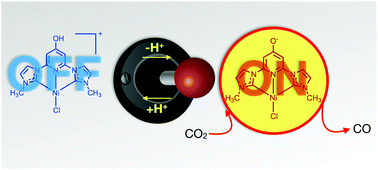Nickel(ii) pincer complexes demonstrate that the remote substituent controls catalytic carbon dioxide reduction†
Abstract
The first example of a CNC pincer ligand with a central pyridinol ligand is reported in a nickel(II) complex. This metal complex can be protonated or deprotonated reversibly in situ to switch on or off the photocatalytic performance towards CO2 reduction. The O− substituent appears essential for catalysis.



 Please wait while we load your content...
Please wait while we load your content...